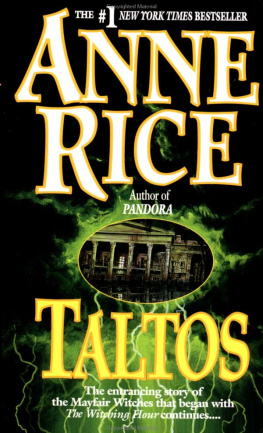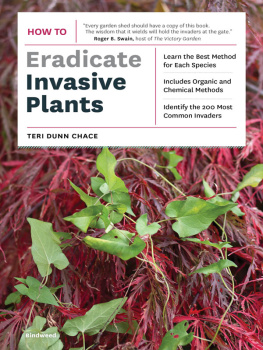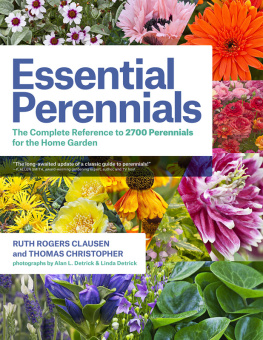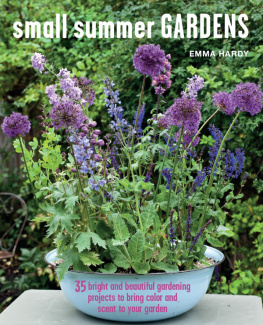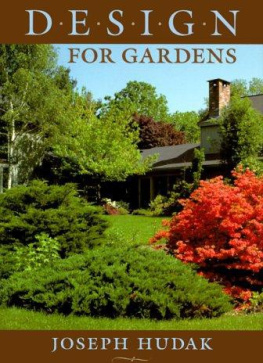PLANTING THE DRY SHADE GARDEN

PLANTING THE DRY SHADE GARDEN
The best plants for the toughest spot in your garden
GRAHAM RICE
photography by judywhite and Graham Rice
TIMBER PRESS
Portland London
The photographers thank the dry shade plantings at Willowwood Arboretum in Morris County, Chester, New Jersey, which reinforce our faith in county parks.
Three dependable dry shade perennialsDryopteris, Heuchera, and Pulmonariamake an effective combination even in a narrow bed that is shaded on two sides.
Photography
judywhite and Graham Rice
GardenPhotos.com
Copyright 2011 by Graham Rice. All rights reserved.
Published in 2011 by Timber Press, Inc.
The Haseltine Building
133 S.W. Second Avenue, Suite 450
Portland, Oregon 97204-3527
www.timberpress.com
2 The Quadrant
135 Salusbury Road
London NW6 6RJ
www.timberpress.co.uk
Library of Congress Cataloging-in-Publication Data is available.
eISBN 9781604693287
A catalog record for this book is also available from the British Library.
For Monty Stokes
Our new generation gardener, propagated with love by Lizzie and Carl

Even a low stone wall can create enough extra depth of soil to encourage hostas, pulmonarias, ferns, and other shade-loving plants to grow more luxuriantly.

Feathery ferns and glossy hostas surround a stone sculpture; pieces of garden art such as this can be a valuable enhancement for creating attractive shade pictures.
CONTENTS
INTRODUCTION

The range of perennials suitable for dry and shady places offer a thoughtful choice of leaf shapes and colors, and some also feature bright, graceful flowers.
If youve ever had the disconcerting experience of seeing a man peering over your fence, trying to discern what was growing under your big blue Atlantic cedar or your overgrown rhododendronsI apologize. That was me. And, I have to say, I often realized that nothing at all was growing there. And so this book is for you.
And to those open and generous garden owners who refrain from running outdoors and shouting at nosy garden writers trying to see what theyre up to behind their fences and hedges, but rather open their gardens to prying poseurs and genuine and admiring seekers of inspirationI thank you.
Gardeners learn from from the inspired and bizarre things that other gardeners do. And whether its Pennsylvanias Milford Secret Gardens Tour or Northamptonshires Oundle Open Gardens, Americas Gardens Conservancy or the National Gardens Scheme in England and Wales, Ive had a chance to see what gardeners on both sides of the Atlantic have done with the dry shade. This has been an invaluable tonicand in this book Id like to share what Ive learned.
UNDERSTANDING DRY SHADE

Hostas with no variegation, or that are only modestly variegated, fare better in dry shade situations than those dominated by bold white or yellow coloring.
Dry shade is the most inhospitable part of any garden. Faced with what seems to be a lost cause, some gardeners simply admit defeat and use the area for the woodpile or the tool shed. But there is no reason why dry and shady areas cannot be as attractive as the landscaping in other areas of your property.
In fact, it is wasteful and unnecessary to simply abandon dry shady areas as dark desertsespecially in urban gardens where every square foot of planting space is vital. This book reveals the wealth of beautiful and resilient plants that will flourish in this difficult situation. To get started, youll be able to make the best plant choices if you first understand the growing conditions. Then you can select from the unexpected and wonderful variety of suitable plants so that the dry and shady parts of the garden can be as lovely as everywhere else.
To grow well, plants need both light and moisture, so the implication is that in dry shady situations they have neither and will not grow. Not so, and Ill explain why in the following pages.
ALL SHADE IS NOT EQUAL
Shade can be cast by solid barriers like walls and fences, by trees, and by overhanging roofs and other structures. It can be solid or dappled, and even some areas that are almost permanently shaded from the direct sun can still be quite bright. Understanding what type of shade you have is the first step in knowing what to plant there.
Fences, Walls, and Buildings
Gardens shaded by solid structures like walls and buildings experience very different conditions from those in shade cast by trees or large shrubs. First, the areas alongside west- and east-facing walls or fences remain shadowed for part of the day but are in good light for the rest of the day. A vast variety of plants will thrive there. North-facing fences and walls, however, are different.
In winter, north-facing borders are sunless. Not only that, but in cold-winter areas, the lack of late winter and spring sun means that this is the last place in the garden where the snow melts and the soil thaws. Late frosts persist for days when in other parts of the garden buds are bursting. Theres a benefit however: the quick morning thaw of frosted buds and shoots that is so damaging to camellias and new spring growth never happens; they thaw slowly and open late but remain undamaged.
In summer, things change. In northern latitudes, even in the height of summer, the sun may hang so low in the sky that parts of the planting area close to the wall remain entirely sunless. Farther south, with the sun high, plants shaded in winter may well be subjected to the full force of the sun in high summer.
But, even when shaded, plantings alongside a wall or fence grow in far better light than those under cover of trees. They may have little light, but they are not in the dark, and they often are spared the intense sunlight they cannot tolerate. And there is no competition from nearby tree roots for moisture and nutrients.
However, planting areas shaded by walls and fences can be dry. Depending on the prevailing winds, the plants may be struggling in a rain shadow, an area of soil from which rain is largely deflected by a barrier such as a wall or overhang. In planting areas backed by stone or brick walls, the drought is exacerbated when the heat retained in the wall increases evaporation from the soil alongside. This has an impact on vines, wall shrubs, and other plants whose roots compete for the moisture in the soil.

Shade plants like ferns and hostas often thrive in planting areas shaded by buildings, walls, or fences because although they are shaded for much of the day they are open to overhead light.
Under Trees
The degree of moisture available to plants growing under trees is not immediately apparent; there are many variables. And shade from evergreen trees is very different to shade from deciduous trees.
Next page

